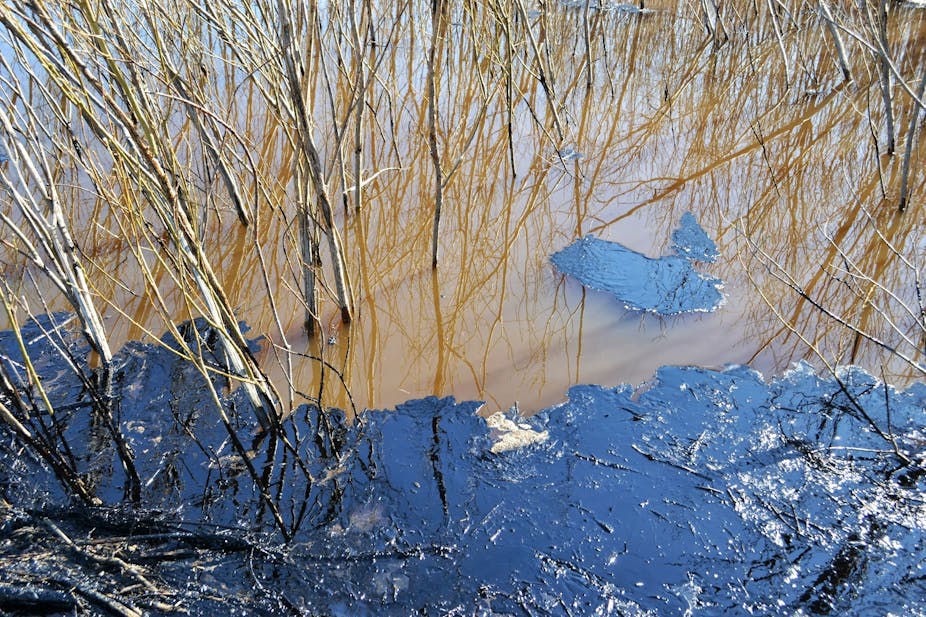The Russian state’s engagement with environmental concerns is complicated, carrying as it does a heavy legacy from Soviet times. From the aftermath of the 1986 Chernobyl nuclear disaster (in what is Ukraine today), the drying up of the Aral Sea, to Russia’s dependence on mining, oil and gas - there is plenty to draw the attention of national and international environmental organisations. Given Russia’s size (the world’s largest by area, spanning nine time zones), its extensive natural resources and large economy, the nation has an indubitable impact on the state of the world environment.
Environmental safeguards in Russia have undergone significant change since the fall of the Soviet Union. Some is broadly positive. For example, a range of environmental legislation has been passed since 1991, and individual rights to a safe environment are enshrined in the constitution. Nevertheless, concerns are regularly raised over how these laws are implemented and enforced, and over the effectiveness of the judicial system.
Environmental monitoring and regulatory activities have also been reshaped during the course of the last 20 years. The 1990s witnessed the steady weakening or “de-ecologisation” of the few state agencies for environmental protection that had gained influence during the turbulent late 1980s and early 1990s. This trend was marked most clearly when, in 2000, the responsible State Committee for ecological matters (Goskomekologiya) was abolished and its functions transferred to the Ministry of Natural Resources, whose primary focus was on developing natural resources.
The move confirmed the suspicion held by many environmentalists that the government was intent on prioritising the exploitation of natural resources over any meaningful environmental protection. Further changes under President Putin in 2004 and 2008 came as part of broader changes in the structure of the state institutions, but no environmental agency regained their former independent position.
Currently, the Ministry for Natural Resources and Environment incorporates two federal services, concerned with monitoring the environment (Rosgidromet) and nature-use (Rosprirodnadzor). Additionally there are ministerial agencies regulating forest, water and mineral resources. These rub shoulders with departments that generate policy and regulations as well as enforce environmental protection. But the more or less constant restructuring of environmental protection ministries, agencies and departments over the last 20-25 years and a sharp fall in staff numbers has inevitably undermined their effectiveness.
Changes at federal level have also complicated the regional picture, where Russia’s considerable size and regional diversity ensures general trends are hard to determine. Russia’s federal subjects’ response to the withdrawal of federal funding has varied. Some have set up replacement institutions, others have been far less proactive.
The alternative to state institutions with the potential to address their failings is environmental NGOs and private businesses. Environmental organisations have developed along a number of trajectories since 1991.
Professional organisations such as Greenpeace Russia and WWF Russia possess the resources and know-how to hold the state to account for its actions and policies. But these groups have been systematically undermined by the government in recent years, as detailed by for example Greenpeace Russia and the Norway-based Bellona Foundation.
Other movements have a closer relationship with the state, which inevitably means they take a less critical stance (branches of the All-Russian Society for Nature Protection, such as this St Petersburg branch, for example). Smaller, regional groups tend to coalesce around local issues and concerns.
The result is a fragmented environmental movement which struggles to find traction or a unified voice, working in an unsympathetic and sometimes hostile political environment. A similar picture emerges in the private sector - although some larger businesses, particularly those linked strongly to international markets with arguably more ecologically-savvy and ethically-minded consumers, have demonstrated a willingness to engage with environmental issues.
Russia’s environmental protection infrastructure remains relatively weak. Some of the more pessimistic predictions prompted by the abolition of Goskomekologiya and linked to the more or less complete breakdown of protection measures have not come to pass. However, there is a clear need for greater federal investment, coherent regional strategy, and reinforcement of independent environmental organisations and the nascent environmental sensibilities of Russian corporations.

